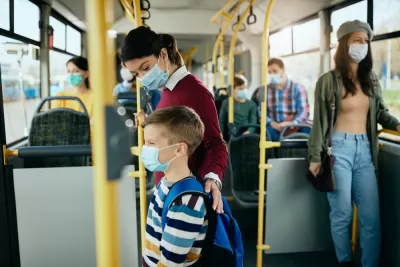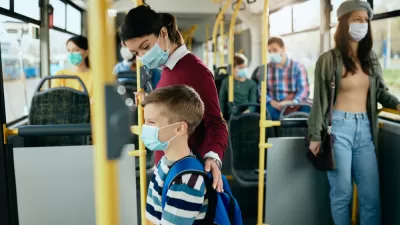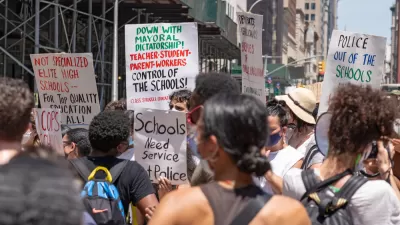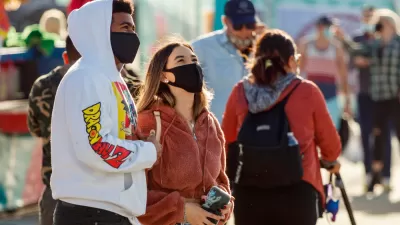Mystery surrounds the decision by the Biden administration to not ask for an immediate stay of an unanticipated district court ruling to vacate the CDC's masks-on-transit rule. Two days later they appealed as coronavirus cases increase nationwide.

Exactly one year and five months after being confirmed by the U.S. Senate to a lifetime appointment on the U.S District Court for the Middle District of Florida, Judge Kathryn Kimball Mizelle made history by striking down the Centers for Disease Control and Prevention (CDC)'s “requirement for face masks on public transportation conveyances and at transportation hubs.”
“The court concludes that the Mask Mandate exceeds the CDC's statutory authority and violates the procedures required for agency rulemaking under the Administrative Procedure Act,” wrote Mizelle last Monday (April 18) in her 59-page ruling [pdf]. In so doing, she effectively ended the ability of the nation's premier health agency to enforce mitigation measures in a public health emergency.
Consequently, the CDC ceased to enforce the mandate immediately, although it maintained its recommendation “that people wear masks in indoor public transportation settings at this time.” However, President Biden, when asked on Tuesday at Portsmouth, N.H., “Should people continue to wear masks on planes,” undermined his own experts by responding, “That is up to them.”
A quiet two days
But if the government's public health experts believe that masks are warranted when traveling, why didn't they immediately ask to stay and appeal the order which many experts disagreed with?
Mizelle's “argument makes very little sense to me,” Lawrence Gostin, professor of global health law at Georgetown University and director of the World Health Organization’s center on global health law, told PBS news correspondent William Brangham on the NewsHour on April 18.
“[I]t's hard for me to think of a more classic case, where the CDC is well within its legal and constitutional powers than at airports, preventing the interstate or the international transmission of a dangerous infectious disease.
“I would say CDC is actually at the very height of its legal powers. And if it can't do this, I'm not sure what it could do to protect the public's health.”
Appeal filed
Finally, on Wednesday, the Justice Department filed the appeal, but only after hearing from the CDC that they had determined "that the order remains necessary for public health.”
“To protect CDC’s public health authority beyond the ongoing assessment announced last week, CDC has asked DOJ to proceed with an appeal in Health Freedom Defense Fund, Inc., et al., v. Biden, et al.” stated the CDC's press release on April 20.
"CDC’s number one priority is protecting the public health of our nation. As we have said before, wearing masks is most beneficial in crowded or poorly ventilated locations, such as the transportation corridor.”
Sheryl Gay Stolberg, a health policy correspondent for The New York Times, reported on the inherent risks in filing the appeal on April 20.
While the C.D.C. wants to keep the mandate intact, it is also pressing the appeal to preserve its public health powers. But doing so is potentially risky; if the ruling striking down the mandate is upheld, that could permanently weaken the agency’s authority.
“This sets up a clash between public health and a conservative judiciary, and what’s riding on it is the future ability of our nation’s public health agencies to protect the American public,” said Gostin. “The risk is that you will get a conservative 11th Circuit ruling that will so curtail C.D.C.’s powers to fight Covid and future pandemics that it will make all Americans less safe and secure.”
But no stay
Stolberg adds that “[l]egal experts said that it was likely that the administration would ask for a stay" which proved not to be the case and may have prompted Times correspondents Charlie Savage and Sharon LaFraniere to ask two days later in a lengthy analysis of the administration's response to the ruling, the source article for this post, “Does the Biden administration really want and intend to fight for a higher court reversal of the ruling?”
Because the case turns in part on whether the C.D.C. was justified in enacting the mandate as an emergency measure that offered no room for public notice or comment, it is notable that the administration appealed the ruling while not seeking an immediate stay. The failure to try to keep the mask order in place could undercut the government’s argument that there was an urgent need for the requirement; otherwise it would have tried to keep it in place, legal specialists say.
Once again, Lawrence Gostin, the public health legal expert from Georgetown University, is cited.
“Basically, it is giving up on the mask mandate,” said Gostin...who advised the White House on the case. “The administration’s goal is a legal principle, which is to ensure that the C.D.C. has strong public health powers to fight Covid and to fight future pandemics. And it appears much less important to them to quickly reinstate the mask mandate.”
The plaintiffs
Finally, Heather Murphy and Savage report on April 25 in the Times on the “unlikely confluence of individuals” responsible for ending the transit mask mandate that, despite much bad publicity, particularly in airports and on airplanes, had the support of most Americans:
Leslie Manookian, a former Wall Street analyst living in Idaho who had founded an anti-Covid-regulation nonprofit; two Florida women who said their anxiety prevented them from wearing masks and, therefore, traveling; and a Trump-appointed federal judge whom the American Bar Association said was too inexperienced to be appointed to the bench.
The peculiar back story of Judge Mizelle’s decision offers a window into the sometimes capricious way public health policy in the United States gets made, in which a lawsuit filed by a little-known organization that opposes masks and vaccine mandates can upend a rule crafted by doctors and scientists.
Making the most of the ruling
Since Mizelle's order will stand, we give the penultimate word to infection disease expert Amesh Adalja, a senior scholar at the Johns Hopkins Center for Health Security, who told The Associated Press on April 19 that it was time to view COVID 19 as an endemic disease.
“There is an opportunity now, instead of saying this is a disappointing ruling, they could say this is a good time to have a conversation about how we move forward in this pandemic about risk calculation.
“With COVID-19, I think we’re at a point with immunity from prior infections, vaccines, home tests and treatments that we can start to manage this the way we manage other infectious diseases,” he said.
Of course, COVID may not be ready to enter endemicity. On April 25, The New York Times U.S. coronavirus tracker shows that cases have increased over 50 percent in the last two weeks to a daily average of nearly 50,000 cases, hospitalizations by 4 percent to a daily average approaching 16,000, but deaths have dropped by 32 percent to a daily average of 363, just 10,000 shy of the once-unimaginable toll of one million deaths.
FULL STORY: Analysis: The U.S. Appealed to Reinstate Masks. But Is It Seeking to Win?

Trump Administration Could Effectively End Housing Voucher Program
Federal officials are eyeing major cuts to the Section 8 program that helps millions of low-income households pay rent.

Planetizen Federal Action Tracker
A weekly monitor of how Trump’s orders and actions are impacting planners and planning in America.

The 120 Year Old Tiny Home Villages That Sheltered San Francisco’s Earthquake Refugees
More than a century ago, San Francisco mobilized to house thousands of residents displaced by the 1906 earthquake. Could their strategy offer a model for the present?

Alabama School Forestry Initiative Brings Trees to Schoolyards
Trees can improve physical and mental health for students and commnity members.

NYC Outdoor Dining Could Get a Re-Do
The city council is considering making the al fresco dining program year-round to address cost concerns from small businesses.

HSR Reaches Key Settlement in Northern California City
The state’s high-speed rail authority reached an agreement with Millbrae, a key city on the train’s proposed route to San Francisco.
Urban Design for Planners 1: Software Tools
This six-course series explores essential urban design concepts using open source software and equips planners with the tools they need to participate fully in the urban design process.
Planning for Universal Design
Learn the tools for implementing Universal Design in planning regulations.
Ada County Highway District
Clanton & Associates, Inc.
Jessamine County Fiscal Court
Institute for Housing and Urban Development Studies (IHS)
City of Grandview
Harvard GSD Executive Education
Toledo-Lucas County Plan Commissions
Salt Lake City
NYU Wagner Graduate School of Public Service





























